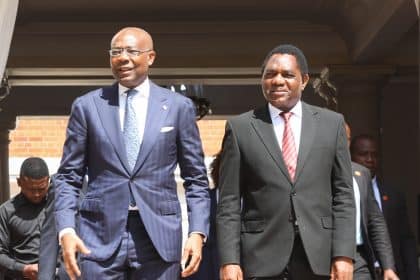The U.S. labor market lost some momentum in May, with job growth slowing sharply amid rising uncertainty over trade policies and federal spending plans. Data released by the Department of Labor on Friday showed that employers added 139,000 nonfarm jobs in May, falling short of expectations and reflecting downward revisions from previous months.
Revised figures show that March and April collectively had 95,000 fewer jobs than initially reported, reducing the average monthly job gain over the past three months to 135,000, well below the 155,000 previously estimated.
While the unemployment rate remained unchanged at 4.2% for the third consecutive month, the number is deceptive. Roughly 625,000 individuals exited the labor force in May, suggesting a growing lack of confidence in job prospects. This trend coincides with findings from recent consumer surveys that indicate increased pessimism about future employment opportunities.
Tariffs and Policy Confusion Weigh on Business Decisions
Economists attribute the cooling job market in part to uncertainty surrounding former President Donald Trump’s inconsistent stance on import tariffs. The administration’s unpredictable policy shifts have left many businesses hesitant to hire or invest. Adding to the unease are internal divisions in Congress over Trump’s fiscal proposals and criticism from high-profile figures, including tech billionaire Elon Musk.
“Cracks in the façade of labor market resilience are now starting to show,” said Scott Anderson, Chief Economist at BMO Capital Markets. “The longer the tariff and spending uncertainties drag on, the more strain we’ll see.”
Despite the overall slowdown, some industries still showed strength. The healthcare sector led job gains with 62,000 new positions across hospitals, ambulatory services, and skilled nursing facilities. Leisure and hospitality added 48,000 jobs, driven mainly by restaurants and bars. Social assistance saw an increase of 16,000, while construction recorded a modest 4,000-job boost.
However, not all sectors fared well. Manufacturing lost 8,000 jobs, especially in machinery production. Retailers also shed workers, and temporary help employment—a key indicator of future hiring, plummeted by over 20,000.
The federal government continued cutting jobs, with payrolls down by 22,000 in May and a total decline of 59,000 since January. These cuts come amid the White House’s aggressive push to reduce the federal workforce, although a federal judge has halted mass terminations, keeping some workers on paid leave.
Wage Growth and Market Response
One bright spot in the report was wage growth. Average hourly earnings rose by 0.4% in May and showed a 3.9% increase compared to the same period last year. This may help cushion the broader economic impact of slower hiring.
Markets reacted positively, with Wall Street stocks trading higher and U.S. Treasury yields rising, reflecting investor hopes that the Federal Reserve might hold off on further interest rate hikes.
Despite weaker job numbers, many experts believe the Federal Reserve will keep its benchmark interest rate steady at its upcoming policy meeting. Economists say the central bank may wait until more pronounced labor market weakness emerges before considering any policy easing.
“The uncertainty making companies hesitant to hire is also making them hesitant to lay off workers,” noted Sarah House, Senior Economist at Wells Fargo.
Participation and Household Survey Data Signal Deeper Issues
The household employment survey painted an even gloomier picture. Employment fell by 696,000, and the labor force participation rate dropped to 62.4% from April’s 62.6%, with the sharpest declines among prime-age workers. Economists partly attribute this to immigration-related policies that may be discouraging participation.
Michael Gapen of Morgan Stanley pointed to a “chilling effect” stemming from immigration crackdowns, which may have pushed more people out of the workforce entirely.
While the median duration of unemployment fell to 9.5 weeks, more individuals reported being newly unemployed or working part-time due to limited opportunities.
As Skanda Amarnath of Employ America put it, “If not for the drop in labor force participation, the unemployment rate would have risen to 4.3%. The decline is masking a gradual deterioration in the labor market.”
While wage growth and job gains in select sectors offer some encouragement, the broader picture suggests that the U.S. labor market is facing increasing headwinds. Uncertainty over trade, immigration, and fiscal policy continues to weigh heavily on business decisions—leaving the economy vulnerable and the Federal Reserve in a difficult position.









